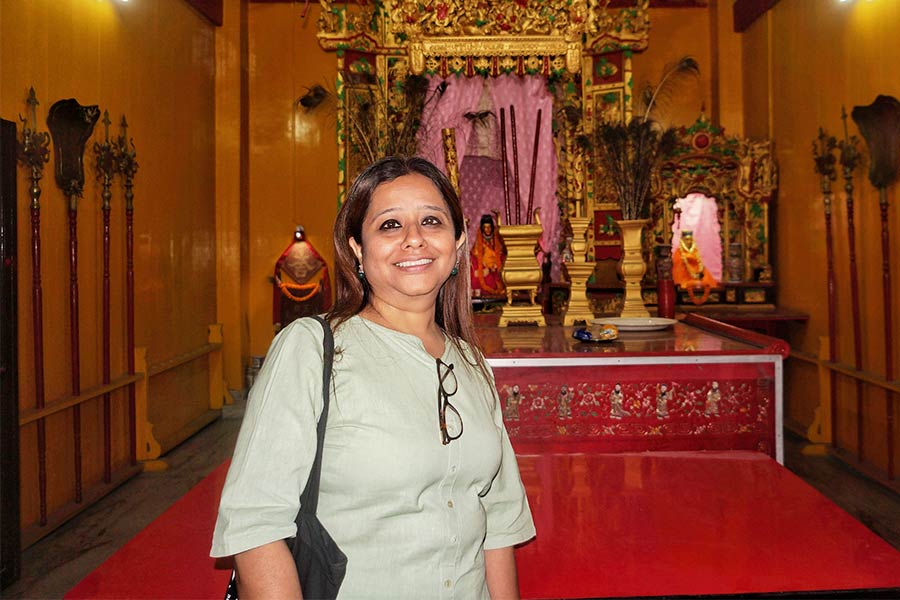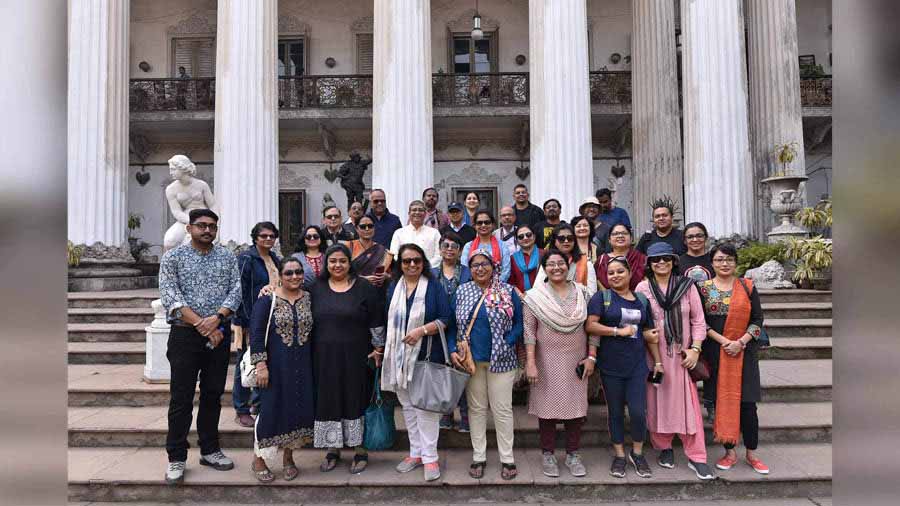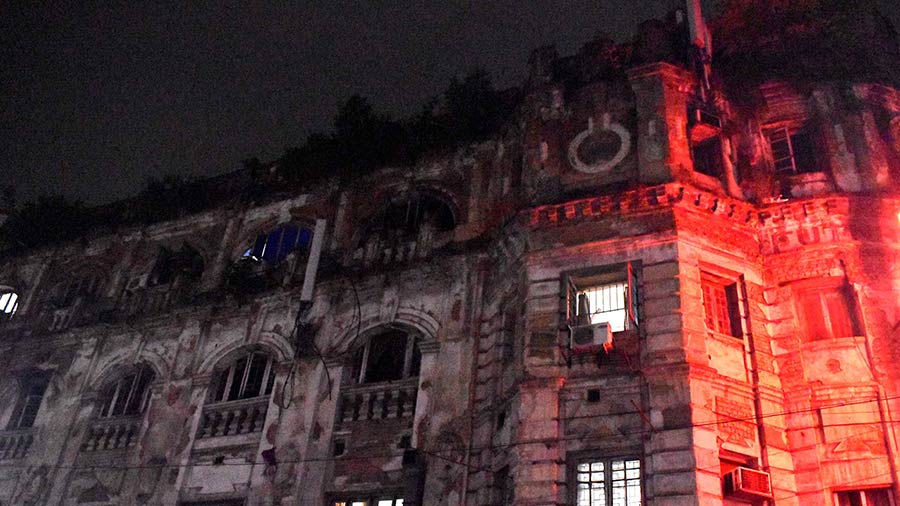Navpreet Arora’s most defining trait as a tour guide isn’t her knowledge about a building’s history or of Kolkata’s most Instagram-able street food. It is her smile, as she greets the watchman of a forgotten monument with the warmth of a neighbour, and the nonchalance with which she slips him a tip. My Kolkata spoke to Navpreet about how Kolkata changed her life, and how she is trying to give back to the city with her walking tours company, FunOnStreets.
A Calcutta childhood
Navpreet’s roots in the city go back to her grandfather, who came to Kolkata from Gujranwala during the Partition. Born in a Punjabi family, she felt a unique connection with her surroundings from an early age. Her formative years were spent extensively engaging with Bengali culture at Calcutta Girls’ High School and Presidency University. One of her fondest childhood memories is of two cultures coming together during Durga Puja, “My mother came to Kolkata as a hardcore ‘Punjaban’ in the 1960s. Back then, only Punjabis wore salwar suits here, while Bengalis wore saris. When I was 10, we were visiting a Durga Puja pandal and my father was really apprehensive since my mom was wearing a salwar suit to a typical Bengali para. We were amazed to see the respect with which she was welcomed! By the time we were in high school, she had started wearing a lal paar sada sari during Durga Puja, complete with sindoor and shakha pola. Assimilation happened very fluidly between the two cultures. My dad spoke chaste Bengali, and people would be surprised to know that he was actually a Sikh man.”
She confesses to always having felt a passion for the city’s lanes and alleys, and even fiercely defended the power cuts of the 1970s and 1980s during her annual trips to meet relatives in Punjab. “People considered Bengal to be a black hole because of those evening power cuts, but I always felt that life here was quite good. During winters, we would go to Victoria every Sunday for picnics. We even found constructive ways to enjoy the power cuts!”
Life took its course, and so did Navpreet. After finishing her MBA, she found a promising corporate job in the mutual fund sector, and her love for exploring the city took a backseat. “I still had the passion, but it was buried somewhere under the bustle of responsibilities.”
Switching gears
After 16 years of deadlines and meeting targets, Navpreet felt done. In 2016, she decided to bid adieu to the 9-to-5 world, and started looking for a new purpose. Funnily enough, the answer lay at home. “We have a guesthouse on Sudder Street called Hotel Galaxy, and my father wanted someone to look after the business. I volunteered, and found myself in the reception, surrounded by international backpackers.” One morning, she came across a group of Spanish photographers, who had tried to explore the Mullickghat flower market, but found themselves overwhelmed by the lanes and bylanes.
“As a child, I would accompany my mother to Burrabazar for all her shopping, so I volunteered to show them around.” What was supposed to be three hours, turned into an entire day. “I didn’t realise how time passed as I took them through the area. Kabhi yahan ki jalebi khilai, kabhi wahan ki kachori (a jalebi from here; a kachori from there). It was an eye opener, because I realised that I knew enough to show people around this area without being a tour guide, but there was also so much I didn’t know,” she said.
When she returned to the guesthouse, the photographers were overjoyed and encouraged her to conduct walking tours. “Until then, I had been really scared about quitting my job. But their feedback gave me the confidence to hand in my papers,” she said.
Navpreet spent the first six months deep in research. After reading everything about Kolkata that she could get her hands on, she went for a couple of heritage walks in the city. The thought that constantly plagued her, was how she would stand out in a cluttered market. “I realised that Dalhousie Square and Writers’ Buildings wouldn’t change for me, or anyone else conducting a walk. So, I decided that I wouldn’t try to be a historian or an academic. I would be a storyteller. Main logon ko kahaaniyan sunaungi (I will tell people stories)”.
While she brushed up on her facts, Navpreet’s focus wasn’t on dates or names. She made herself a human library, compiling stories from people on the streets. “My guests can find all the information about a monument on the internet. But you truly experience the pulse of the streets, when you speak to the guy selling straw hats outside Victoria Memorial, or the person making littis outside Nimtala Ghat. I became the Pied Piper, and my goal was to make walks as visual as possible,” she said.
At the start, she began taking her friends for walks, and incorporated their feedback. After a few test walks, she found that the same spots were transformed when seen from an alternative perspective. “There is a typical walk around Dalhousie Square. I gave it a twist, by going from Strand Road to Metcalfe Hall, telling the story of the river’s development and the various traders. I also conceived a Faith Walk around Bow Barracks, taking people to spots important for different faiths, all in one area. My research also showed that old palaces in the city were the hub of theatre during the nationalist movement. The idea of nationalism percolated to the grassroots through drama and poetry, which were conducted in zamindari houses like Jorasanko Thakurbari, Marble Palace and Mullick Bari. And so, I had a Theatre Walk. The route was the same, but the narrative became richer,” she exclaims.
On September 25, 2016, she launched her first walk in Kumartuli, just before Durga Puja. Forty people signed up, surpassing her expectations. FunOnStreets started seven years ago, with four walks. Today, Navpreet has over 25 curated walks.
Walking the talk

Navpreet with a group at Bow Barracks, as a part of her Faith Walk
Since she started her walks, Navpreet has found new reasons to fall in love with Kolkata every day. She attributes a lot of this to how her Punjabi roots have meshed with the Bengali environment. “For my Palace Walk, I would speak to owners for stories. When some of them heard my name, they would exclaim, ‘Tumi Bangali noy, tumi ki jano (You are not Bengali, what would you know?’’. But most people would actually be really happy to see my passion for the city and culture, despite not being a Bengali,” she smiles. The city’s Punjabi community has even felicitated Navpreet for showing Kolkata in a new light.
Growing up in central Kolkata, Navpreet had little exposure to the northern parts of the city. “When I got into Presidency University, my mother had jitters thinking how I would travel so far. And now, my work takes me all the way to Kashipur!”
Incidentally, one of her most transformative experiences in north Kolkata was at Sonagachhi. “I was searching for an address and entered one of the lanes. I saw the women standing and immediately realised where I was. There was some apprehension, and I kept my husband on SOS. Suddenly, a man came up to me. For 10 seconds, I thought I was in trouble. He then politely asked, ‘Didi, kothay jaben?’ When he realised I had entered the area by mistake, he asked me not to fear, and guided me towards where I needed to go.”
She tries to look for these trinkets of tales wherever she goes, be it in the nimbu chai opposite Lakshmi Narayan Shaw And Sons, the spiritual vibrations inside Nakhoda Masjid, or the shadows falling from balcony grilles in Dover Lane. While everyone walks on Chitpur Road, Navpreet finds pleasure in taking a detour through the adjoining lanes. Exploring the nuances of the city is both a job, and a sense of respite for her. “Whenever I have some time to spare, I take an evening launch from Howrah, and watch the changing colours of the water. At 4pm, it is silvery white because of the shining sun. At sunset, it becomes a fiery shade of orange, followed by purple during twilight. In a few minutes, it goes pitch black. It feels like the river is talking to you,” she beams.
The way forward
While her work brings her close to the best parts of the city, Navpreet feels that preserving it requires mindful balance. She denies the notion that Kolkatans are ‘prisoners of their past’, citing the example of how khorkhoris have been retained in modern architecture. She also points out setups like Lal Bari and The Bhawanipur House, which have restored a heritage building while keeping its spirit intact, and made it financially viable in the process. “It is very easy to tear down a house where the style of washrooms or kitchens is not practically usable. More than deep pockets, it requires courage to maintain such a structure. If we do away with our aesthetic, our streets will lose their character.”
This is where balance comes in. While she agrees that Kolkata doesn’t need run-of-the-mill modern facades, she also dissuades people from excessively romanticising the bygone era. “So many beautiful mansions are crumbling in the streets of Pathuriaghata, because people don’t want to touch them. People from these baris need to leave behind their apprehension for modernity and take a few steps forward, and builders need to take some steps back from the ugly glass facades.” For her part, Navpreet is trying to work towards cleaning the tiles from the legendary Tagore Castle’s wooden staircase.
Her next agenda is to go beyond Kolkata and explore all of Bengal. From terracotta temples to the textile industry, there is something for everyone within the state, and Navpreet highlights several hidden gems located in Dhanyakuria, Chandraketugarh, Serampore and other places that are barely a few hours from the city. “The only problem is a lack of infrastructure. There are so many places worth seeing, where I can’t take my guests because the roads aren’t good to drive on, there isn’t a good place to eat, or there aren’t hotels to stay in. Similarly, we can showcase so many household Durga Pujas that go back centuries in a much more appealing manner to tourists.”
Irrespective of the challenges, there is a childish grin on Navpreet’s face every time someone mentions the City of Joy. “People often ask what is there to see in Kolkata, beyond Victoria Memorial and Howrah Bridge. This city has so many layers, all of which deserve to be explored. The more I travel the world, the more I respect Kolkata. Every street has a frame, which is appealing to photographers, storytellers, historians and culture enthusiasts. At 43, people thought I was mad to leave an air-conditioned office to walk the streets. It has been seven years since, and I’m still walking,” she signs off.


